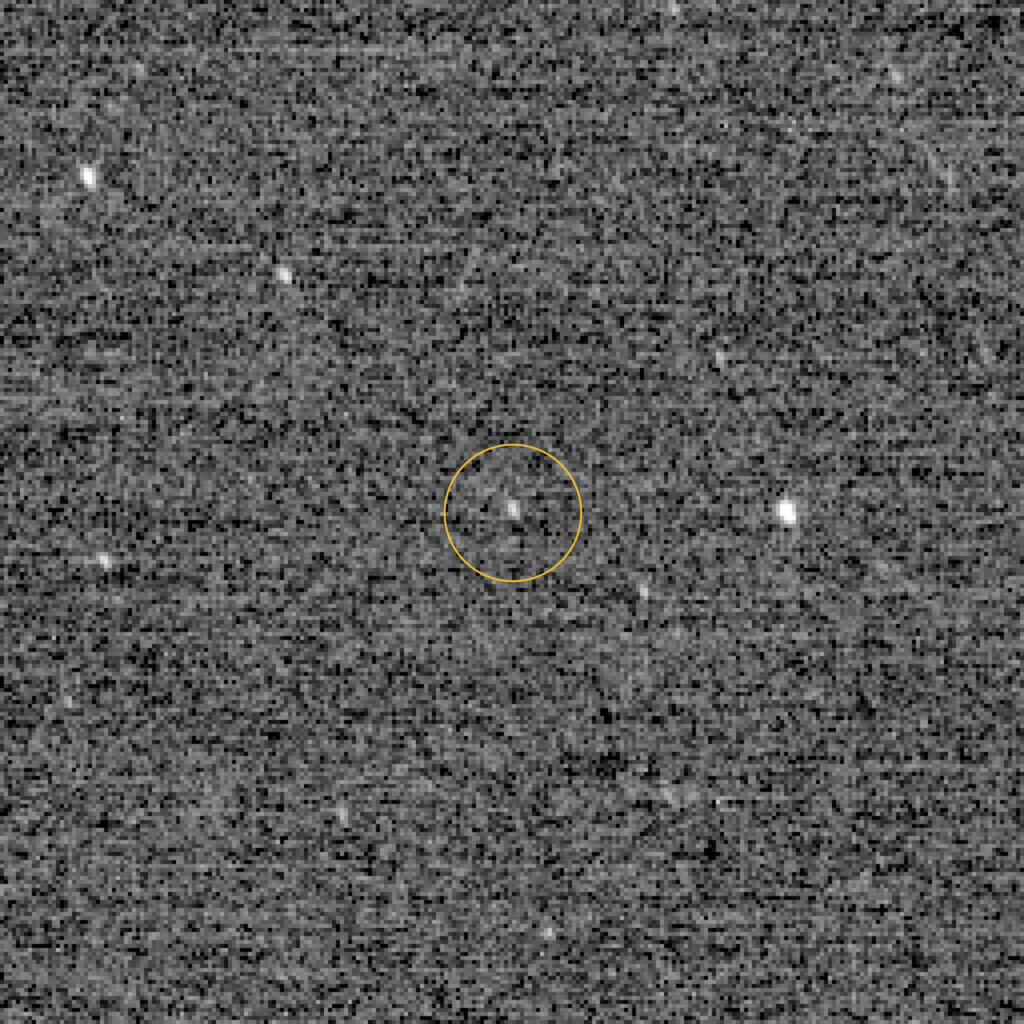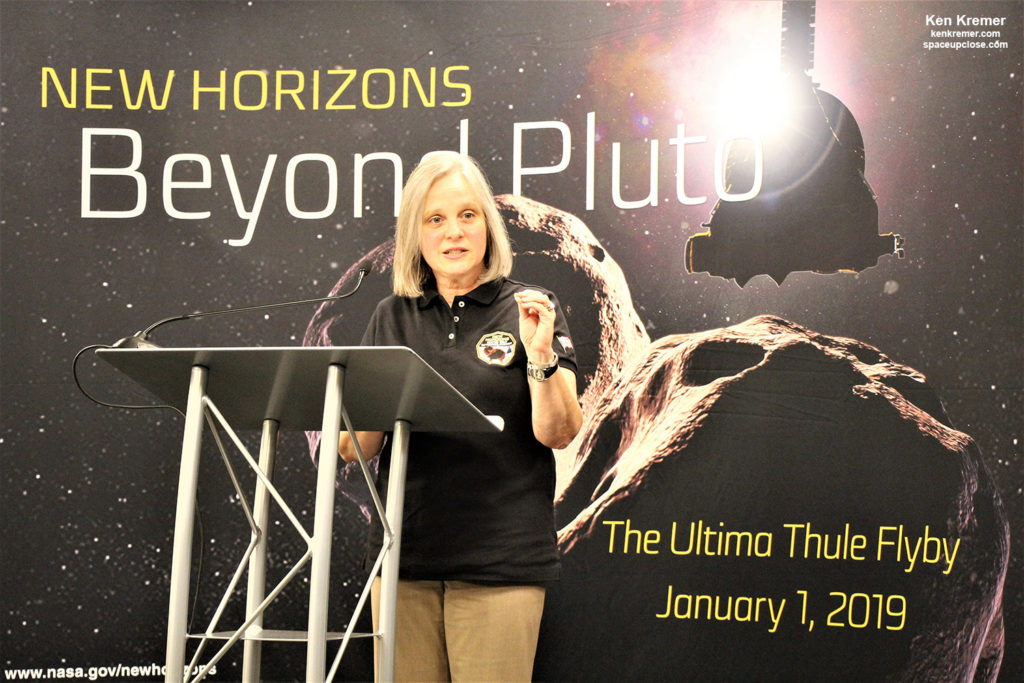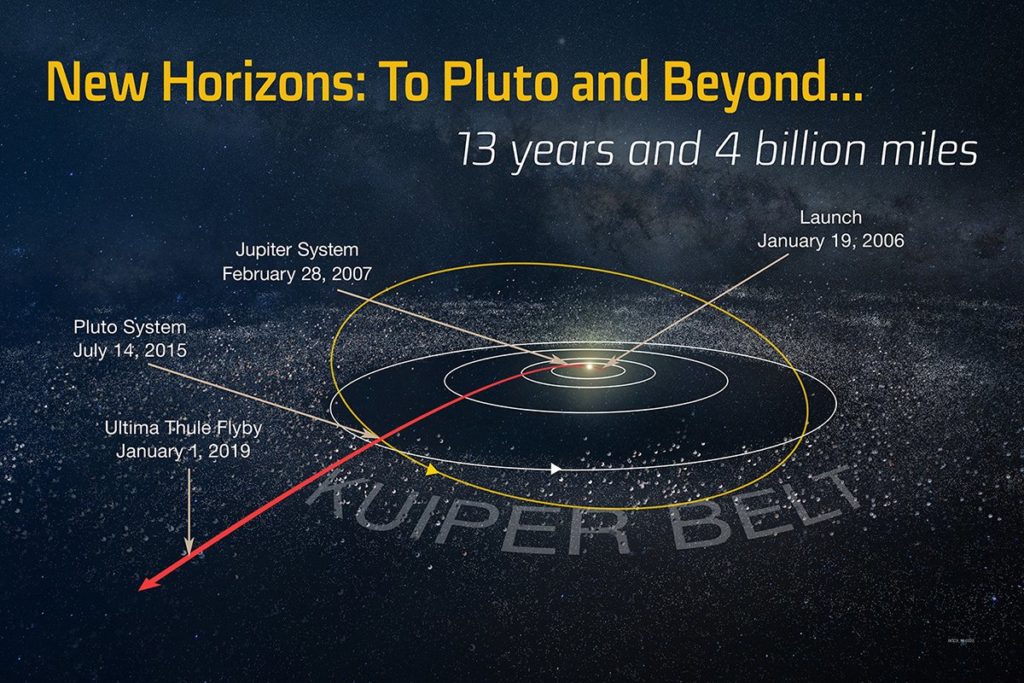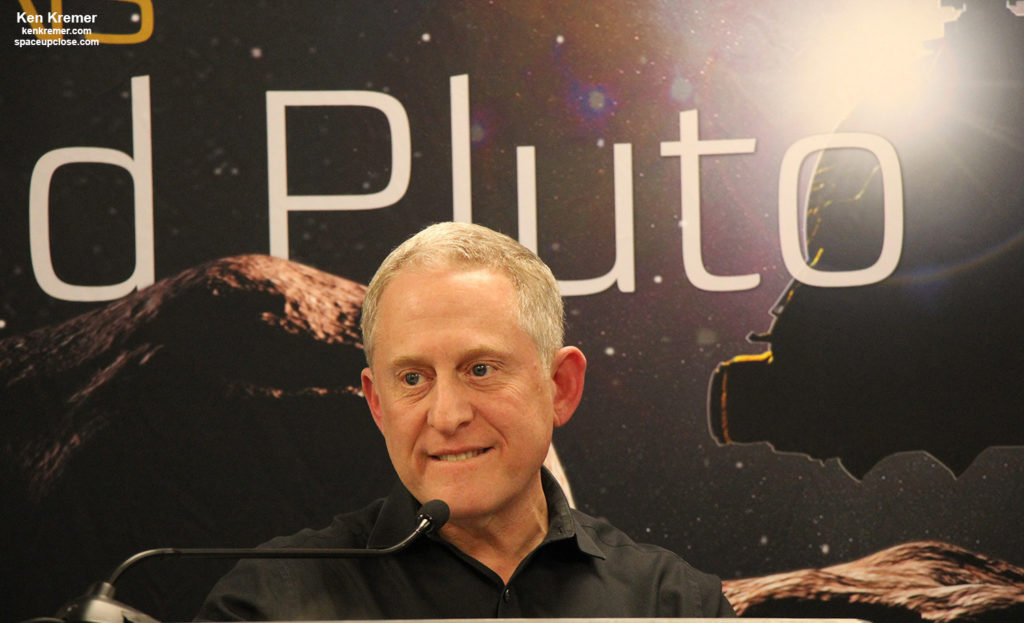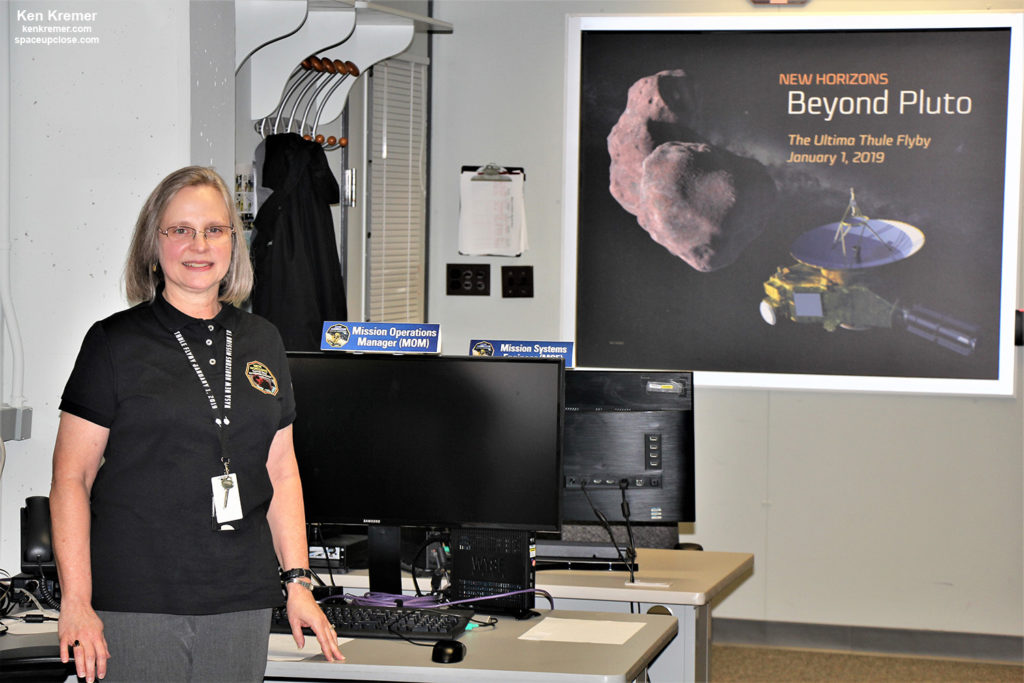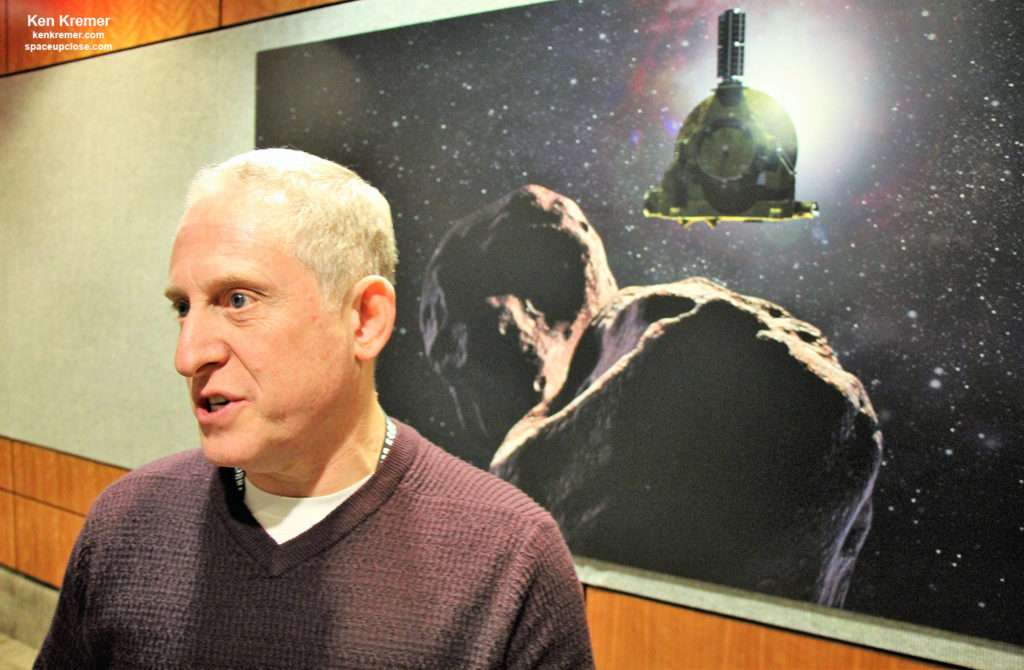Ken Kremer —SpaceUpClose.com &
RocketSTEM –30 December 2018
JOHNS
HOPKINS UNIVERISTY APPLIED PHYSICS LABORATORY, LAUREL, MD – With 1 day to go, NASA’s New Horizons spacecraft is on target to conduct the most distant ever flyby of an object by a spacecraft from
humanity at a miniscule rock named ‘Ultima Thule’ on New Year’s Day 2019 – located
over 4 Billion miles (6.5 billion km) from the Earth in the Kuiper Belt it is key
to unlocking the mysteries of the origin and evolution of our Solar System eons
ago at a place we known virtually about today.
That all changes on New Years Day.
The flyby of ‘Ultima
Thule’ by New Horizons will take place on New Year’s Day 2019 at 12:33 a.m. EST
in the Kuiper Belt – the third and outermost and least explored region of our
solar system.
And the final
commands to accomplish the flyby have been sent to New Horizons by the science
and engineering team back on Earth early Sunday, Dec. 30 and confirmed late in
the evening when radio signals were received back on Earth by the eagerly
waiting team.
knowledge update was made just after 3 am [EST] Dec 30, Alice Bowman, New
Horizons Mission Operations Manager (MOM), Johns
Hopkins University Applied Physics Laboratory, told Space UpClose.
went up about 8:40 a.m. EST Dec 30 and have just been confirmed 9:10 p.m. EST
Dec 30. And these are the last commands to accomplish the flyby.”
The team only had
to make a 2 second timing adjustment in the science and engineering observations
and measurement approaching the aim point – which amounts to a change in known position
of the spacecraft of just 30 kilometers, said Bowman at a media briefing for reporters
today, Dec 30, at JHU APL. That’s just beyond amazing!
is healthy. We are all very excited!”
onboard New Horizons, meaning Ultima Observations are adjusted to occur at the
best possible times based on the latest trajectory info.@NasaNewHorizons
@jhuapl,”
Bowman added on twitter late tonight.
Completing the encounter successfully
is now all up to the piano sized spacecraft itself which will operate autonomously
and gather data using its suite of seven science instruments.
‘Ultima Thule’ is
a fossil remnant from the formation of the early solar system that has almost
certainly remained unchanged over time and thus represents our best chance to
study how we came to be some 4.5 Billion Years Ago.
a velocity of 32,000 mph (9 miles per second) at a distance of merely 2,200
miles.
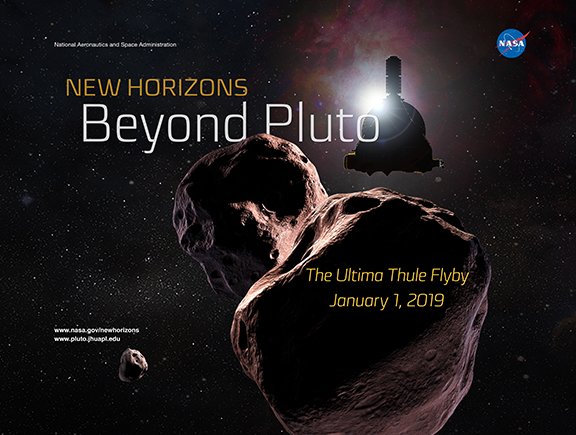 |
|
Artists concept of New Horizons and Ultima Thule Kuiper
Belt flyby target New Year’s Day 2019. Credit: NASA/JHUAPL/SWRI |
Although the encounter period lasts about 9
days, like during the Pluto planetary encounter, the closest approach period of
science gathering itself is just +/- 1 hour from 12:33 a.m. Tuesday morning, Jan
1, 2019.
one – including the New Horizons team and the missions Principal Investigator PI
Alan Stern – knows what the surface looks like or much else! Because of the
immense distance from Earth.
about MU69,” said Alan Stern, New Horizons principal investigator from the
Southwest Research Institute, at the Dec. 30 media briefing for reporters at
JHU APL. “We’ve never, in the history of spaceflight, gone to a target that we
knew less about, and it’s remarkable that we’re on the verge of knowing a great
deal about this.
more than five facts about it. We know its orbit, we know its color, we know a
little bit about its shape, and its reflectivity. We can’t even get the
rotational period. I thought we’d have that 10 weeks ago.”
The shape and composition of ‘Ultima Thule’ is
unknown. It could be peanut shaped or binary. Its size is estimated at no more than 20 miles (30 kilometers) long, or, if a
binary, each about 9-12 miles (15-20 kilometers) in diameter.
best preserved sample of pristine material ever visited. There is no geologic engine
for change, unlike Pluto.”
visited by any spacecraft in history.
conducted in history.
transmit health and safety data to confirm the outcome of the mission, Bowman
explained at the briefing.
take about 2 years to downlink because of the slow data rate transmission, said
Bowman.
Only a few GB will be sent before the spacecraft is
occulted by the sun on Jan. 4, preventing further data playback for a few days
until signals are reacquired.
Jan. 2, says Stern.
released at the 2 p.m. media briefing.”
Horizons has been hurtling towards the unexplored outer limits of our Solar
System since launching 13 years ago in Jan. 2006 and conducting the first up
close flyby of Pluto – the ninth planet – in July 2015.
Pluto, the largest known body in the Kuiper
Belt, was the first target explored by New Horizons during a fast flyby over three
years ago during July 2015.
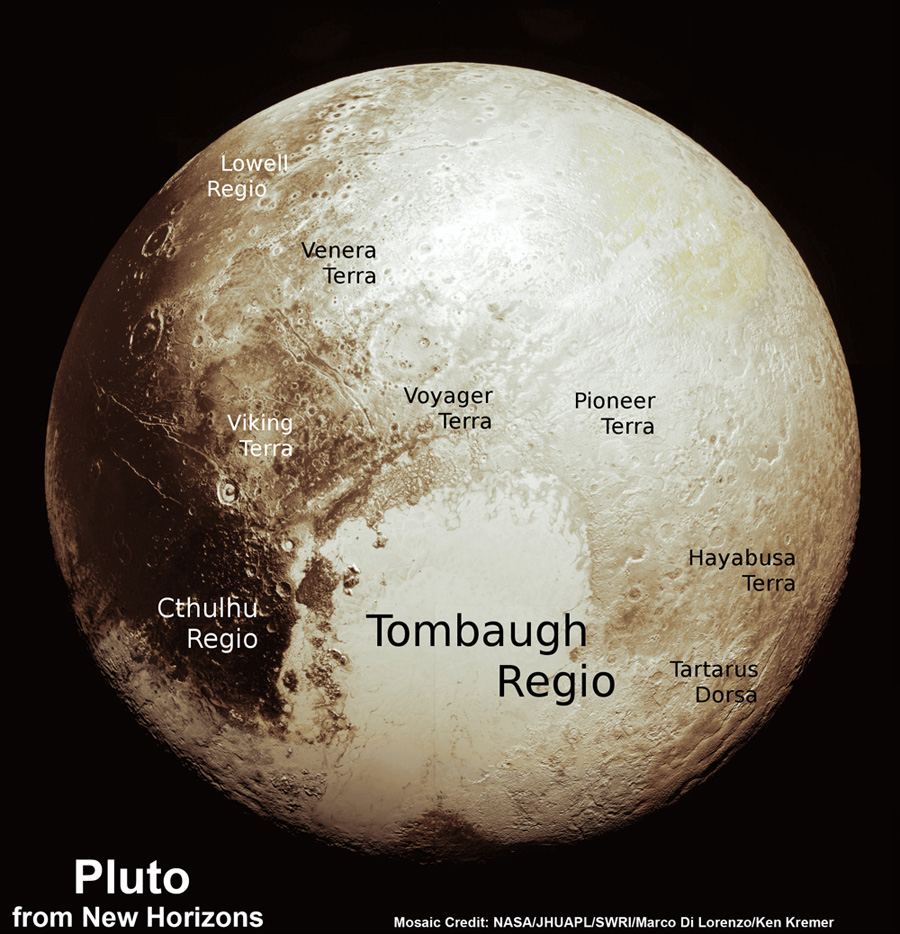 |
|
Global mosaic of Pluto created from raw images gathered
during July 2015 flyby by NASA’s New Horizons spacecraft. Credit: NASA/JHU/JPL/SWRI/Marco Di Lorenzo/Ken Kremer/kenkremer.com |
‘Ultima Thule’ is the second Kuiper Belt object that will be
explored up close by New Horizons.
miles (1.6 Billion km) beyond Pluto and orbits 4.1 Billion miles (6.6 Billion
km) from the Sun and the Earth .
for the spacecrafts next flyby target on New Year’s Day 2019 – “symbolizing this ultimate exploration by NASA” says Alan
Stern, the missions team leader and chief scientist.
frozen world – officially known as 2014 MU69 – will
become the farthest object ever explored up close by a manmade emissary in
history when NASA’s New Horizons spaceship zooms past for a close encounter on Jan. 1, 2019 orbiting more than a billion miles beyond
Pluto, the most distant planet in our Solar System.
first ever up close examination of this distant object holds critical clues to
the formation of the outer solar system eons ago.
says New Horizons spacecraft is performing perfectly and all systems and
subsystems are just as good as the day they were launch in Jan. 2006 on a ULA
Atlas V rocket.
has enough power to operate through the mid-2030’s at least and can conduct a
third flyby.
team says they will begin that search immediately using the LORRI camera and
propose an extended mission to NASA in the summer of 2020.
Watch
for Ken’s continuing onsite coverage direct from JHU APL.
Watch
for Ken’s continuing onsite coverage of NASA, SpaceX, ULA, Boeing, Lockheed Martin,
Northrop Grumman and more space and mission reports direct from the Kennedy Space
Center, Cape Canaveral Air Force Station, Florida and Wallops Flight Facility,
Virginia.
and human spaceflight news: www.kenkremer.com –www.spaceupclose.com – twitter
@ken_kremer – email: ken at kenkremer.com
journalist and photographer based in the KSC area.
Ken’s photos are for sale and he is available for lectures and outreach events


